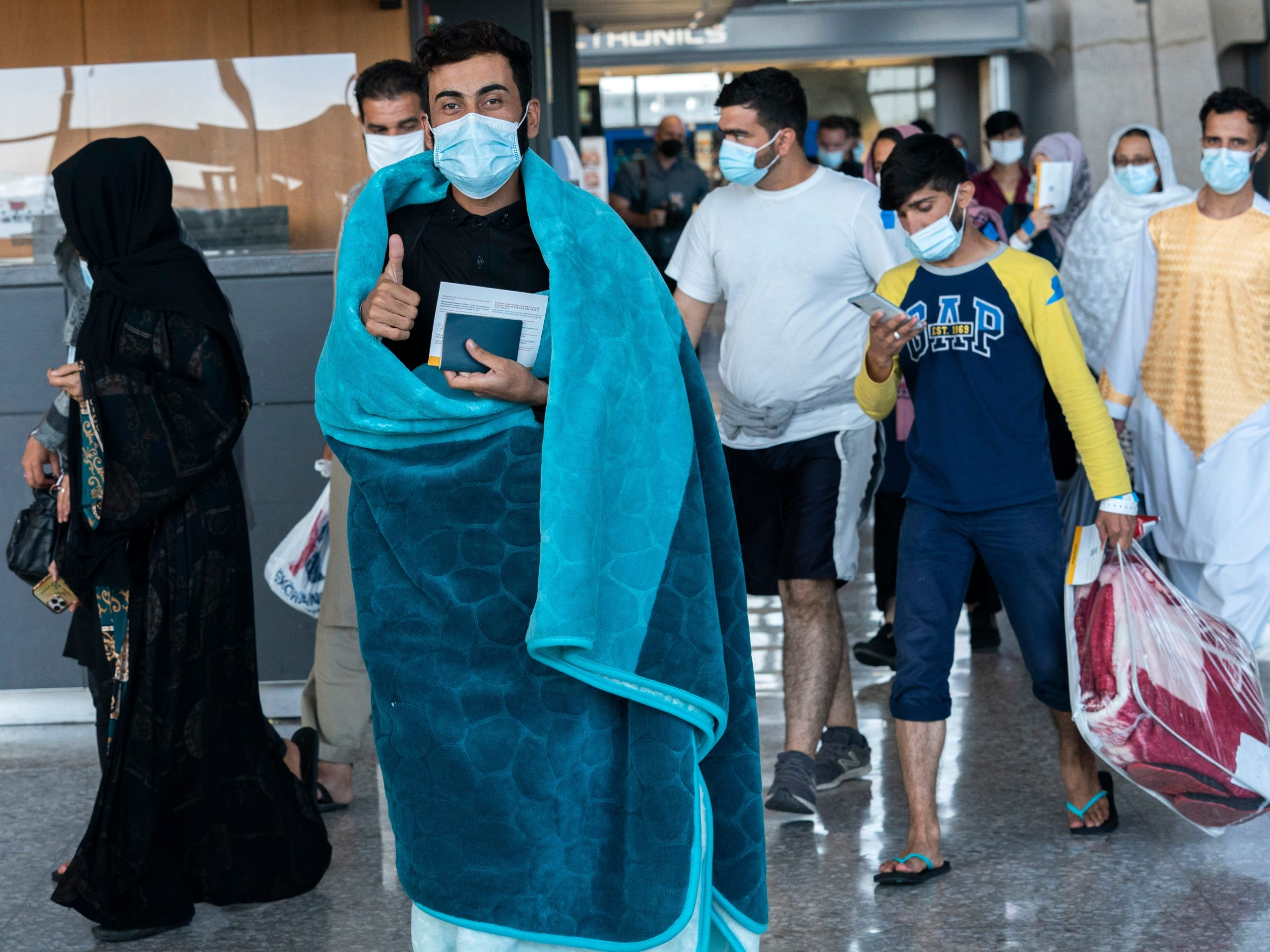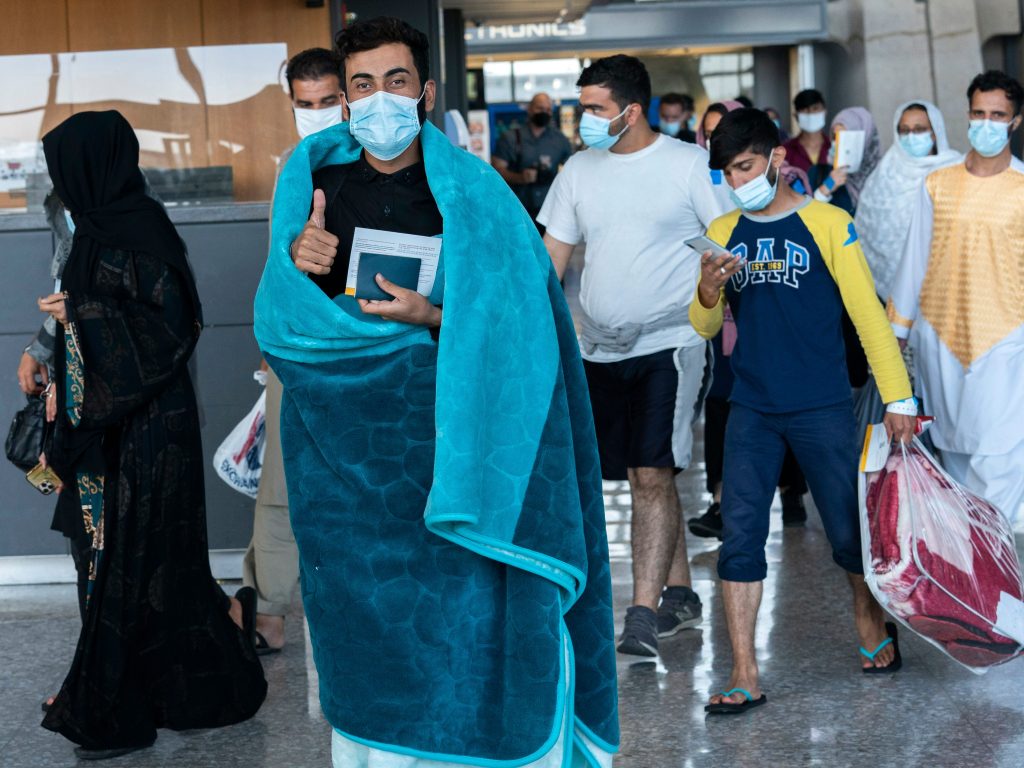
Jose Luis Magana / Associated Press
- Refugees evacuated from Afghanistan face a rigorous vetting process before they can enter the US.
- More than 23,000 Afghans had already arrived between August 17 and August 31, US officials said.
- Tens of thousands more are at bases across Europe and the Middle East where they undergo vetting.
- See more stories on Insider's business page.
More than 124,000 civilians have been evacuated by the US military and its allies from Taliban-controlled Afghanistan – and many Afghans now face a rigorous vetting process before they can start their new lives in America.
"We're part of an urgent team effort to move Afghan evacuees out of temporary housing in intermediate staging bases in the Gulf and in Europe and on to begin new lives," Defense Secretary Lloyd J. Austin III said at a Pentagon briefing Wednesday.
He continued, "Some of those brave Afghans will be coming to make new lives with their families in America, after careful screening and security vetting run by our interagency partners."
More than 31,000 evacuees from the Afghanistan capital of Kabul had already entered the US between August 17 and August 31, including 23,876 Afghan refugees who are deemed "at-risk," State Department spokesman Ned Price said Wednesday.
It was not clear how many of those individuals held or qualified for a special immigrant visa, but Price said "many of them will be SIVs."
Additionally, Price said, the more than 31,000 evacuees also included 4,446 US citizens - which he explained was the "vast majority" of the approximate 5,500 Americans who were airlifted out of Afghanistan in total - as well as 2,785 legal permanent residents.
"These initial figures probably overcount US citizens, because our first priority, as we've said ... was and is to US citizens, to US passport holders," Price said. "So as additional individuals come to the United States, we expect the proportion of other categories - of LPRs and Afghans at risk - to rise."
While these evacuees have already arrived in the US, tens of thousands more are at staging bases across Europe and the Middle East.
As of Wednesday, Chairman of the Joint Chiefs of Staff Gen. Mark Milley said there were "approximately 20,000 evacuees and seven staging bases in five countries in Central Command" and "another 23,000 in seven staging bases in four countries in Europe."
Milley added that as of Wednesday morning there were "approximately 20,000 Afghans who arrived at eight different military bases in the continental United States."
Those military sites where Afghans are now temporarily being housed include locations in Wisconsin, New Mexico, Virginia, Indiana and New Jersey.
White House press secretary Jen Psaki explained at a press briefing last week the screening process evacuees undergo in third countries "is conducted by a combination of the intelligence, law enforcement, and counterterrorism professionals from across government."
"They're conducting screening and security vetting for all SIV applicants and other vulnerable Afghans before they are allowed into the United States," Psaki said. "This includes reviews of both biographic and biometric data. And if an individual is not through that vetting process, they're not coming into the United States."
Following their arrival to the US, many of the evacuees are then connected with one of nine resettlement agencies contracted with the US State Department to help find refugees housing and jobs in America, among other services.
"They're not letting them onto the airplane to come to the United States with parole unless they've already done the thorough vetting," Matthew Soerens, the US director of church mobilization and advocacy at the World Relief resettlement agency, told Insider.
According to Soerens, World Relief received 364 Afghans with approved special immigrant visas last month as of August 30, and 173 of them were resettled in Sacramento, California.
He said the agency is gearing up to receive an influx of Afghan evacuees, but does not know how many.
"In terms of numbers I don't think we know for sure," Soerens said. "But at one point last week we were told that across the nine agencies, we could expect as many as 50,000 people to be paroled in, in addition to 20,000 coming in with their special immigrant visas."
Meanwhile, Soerens expressed his frustration with the US for leaving behind thousands of allies in Afghanistan.
"The number of Afghans who got out was significantly less than we believe should have and we're going to still keep advocating for those people," Soerens said.
A State Department official estimated Wednesday the US left behind "the majority" of special immigrant visa applicants in Afghanistan - or those who worked with US military forces during the 20-year war.
